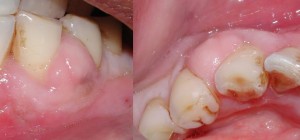Oftentimes, the simplest way to protect the entire health is to safeguard the mouth – oral health. This is because most health conditions originated from the mouth along with its other parts. Sad to say, dental problems are unavoidable. Dental problems exist due to lack of proper oral hygiene, leaving the teeth and gums prone to different bacteria. Get the facts about this dental problem in these additional resources.
Dental plaques are among the common reasons why the gums deteriorate. This is because these contain bad bacteria which infect the gums and sulcus, resulting to gingivitis. As all of us know, gingivitis is the mildest form of gum disease but requires immediate attention. When plaques remain on the teeth, these lead to dental tartar. Tartars are irritants which are extremely difficult to remove using a normal toothbrush that requires extensive method like SRP treatment. Periodontal disorders such as gum disease and gingivitis showcase different signs and symptoms including swollen and red gums. Even though these signs are pretty tempting to ignore since they’re all mild, it should still not be left unattended.
In addition to red and swollen gums, bleeding gums and pus in between the teeth and gums are also deemed as part of the periodontal disease symptoms. Apart from that, this could also be acquired through genetics.
Periodontal disease is a dental problem that destroys the soft tissues and bones. These soft tissues support the teeth – that when inflicted and damaged may result to tooth loss. Based on research, periodontal disease can be prevented. The easiest way to avoid such predicament is through practicing right oral hygiene. This implies daily brushing and flossing as well as attending regular dental checkups. Teeth cleaning and balanced diet can also help avert periodontal disease. Avoiding bad habits like smoking cigars can also minimize the presence of periodontal disease.
Even though periodontal disease may result to serious health conditions, these can still be professionally treated. This can be done through gum disease treatment. The most basic non-surgical treatment is the SRP procedure or also known as scaling and root planning procedure. This cleans the root surfaces of the teeth and gums, eliminating the toxins, plaques and tartar. Dental surgery is also another way to solve periodontal disease. This type of treatment involves the procedure of pocket reduction, grafting and crown lengthening. For any periodontal disease symptoms, contact your dentist right away.
To completely avoid this dental problem, keep your teeth free from dental plaques. Follow the right oral regimen and always speak with your dentist on regular basis. Remember that, “Prevention is better than cure.”
